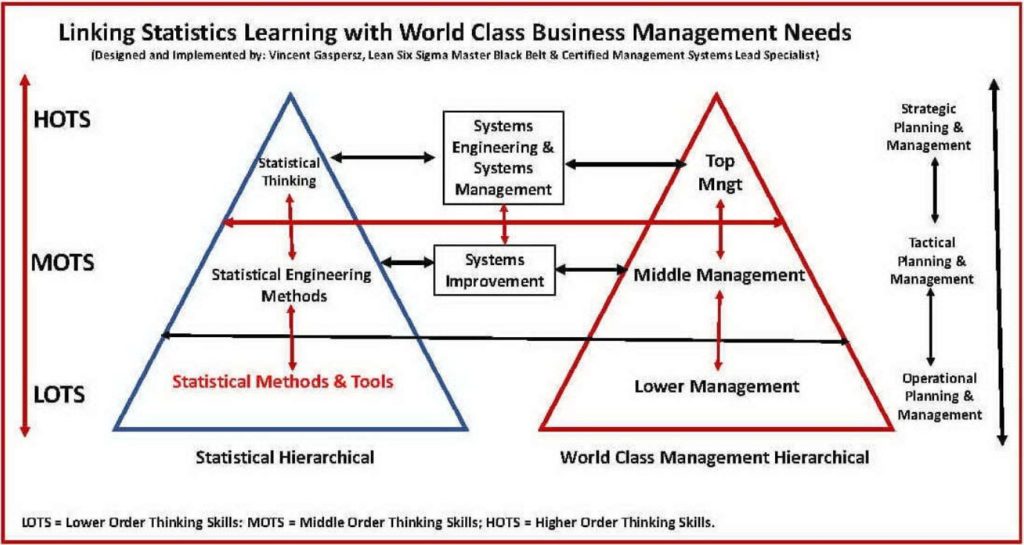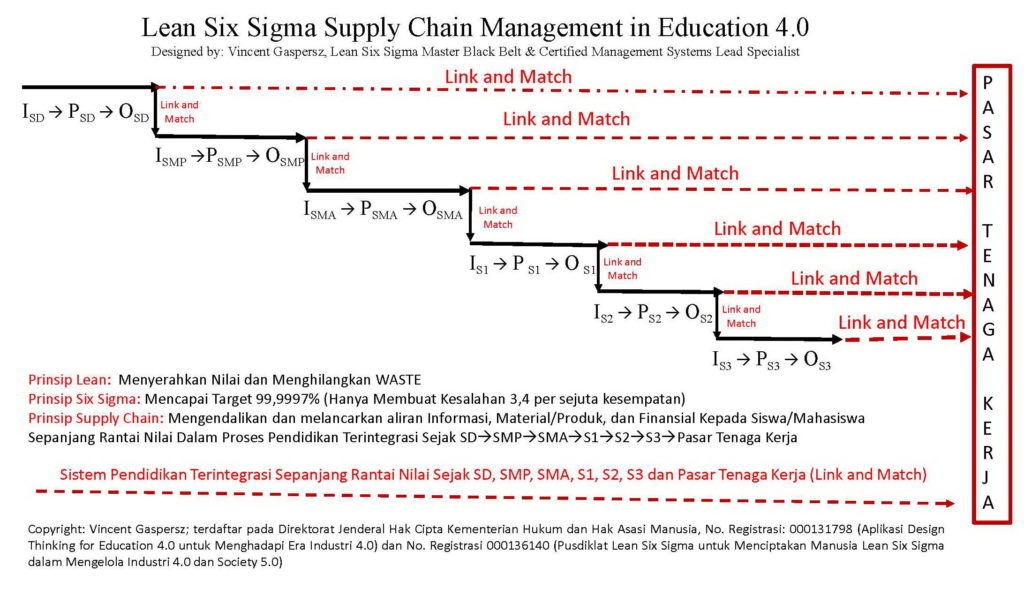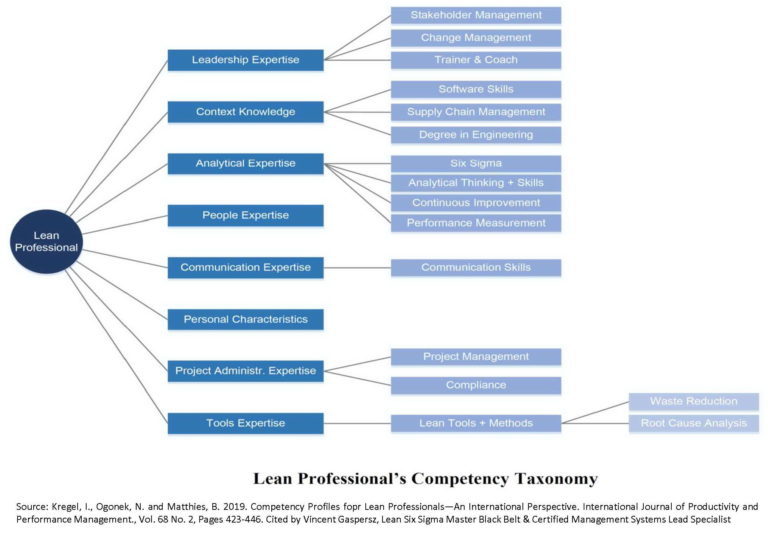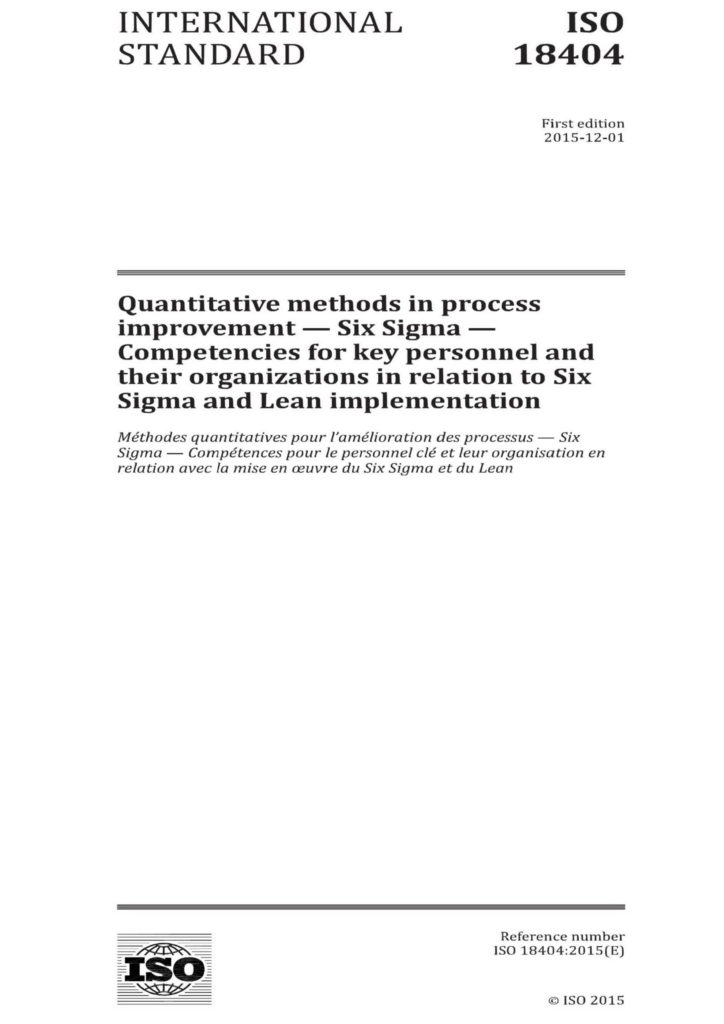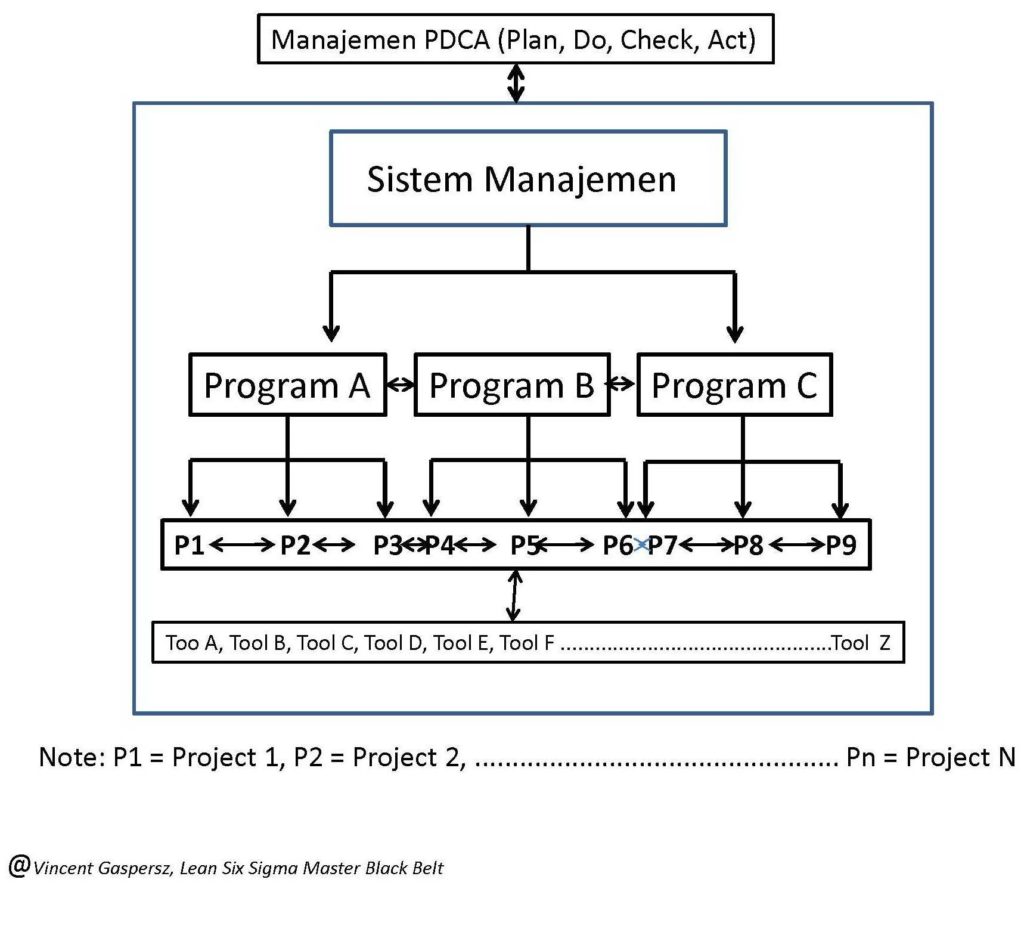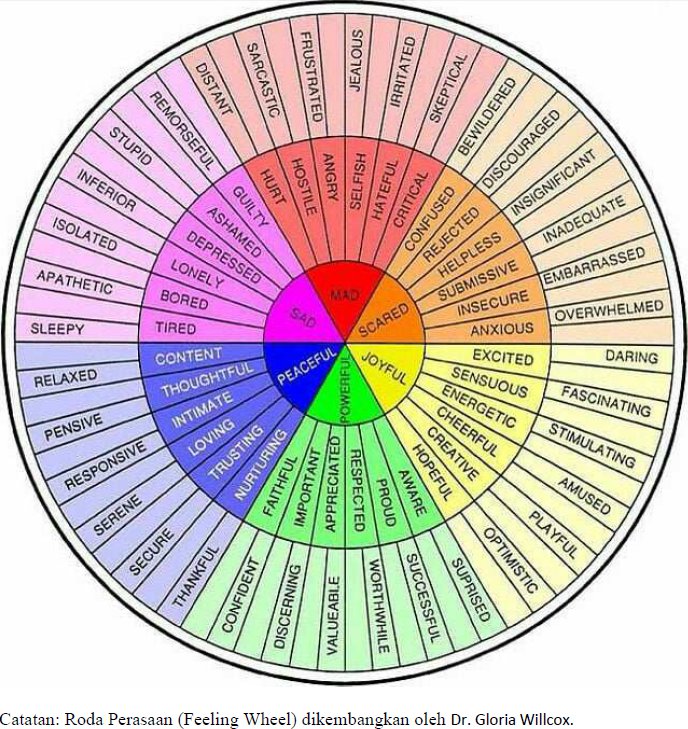-
Bahasa Indonesia
-
English
Hampir 85% – 90% implementasi Six Sigma (Lean Six Sigma) dalam organisasi baik di Indonesia maupun di dunia GAGAL, karena manajemen tidak memahami bahwa Six Sigma (Lean Six Sigma) adalah Sistem Manajemen BUKAN sekedar alat-alat statistika (statistical tools). Diagram terlampir menunjukkan bahwa keberhasilan implementasi Six Sigma (Lean Six Sigma) HARUS mengikuti prinsip-prinsip implementasi Sistem Manajemen Modern yang berlandaskan pada: (1) Management Systems Approach, (2) Management Science Approach, dan (3) Contingency or Situational Approach.
Mengapa mereka yang menguasai Statistical Thinking akan lebih cepat memahami suatu ilmu pengetahuan dan teknologi baru? Karena pada umumnya, orang-orang yang memiliki keterampilan berpikir statistika (Statistical Thinking) secara otomatis juga akan berpikir sistem (Systems Thinking), dan apabila iptek itu akan diaplikasikan dalam suatu organisasi atau lingkungan tertentu, maka akan disesuaikan dengan tingkat kematangan organisasi itu (situational approach).
Demikian pula mengapa informasi yang disajikan dalam bentuk: Y = f (X), baca: Y sama dengan fungsi X, atau Y tergantung pada X; akan sangat memudahkan orang untuk memahaminya? Daripada menjelaskan dalam bentuk omong-omong secara teoritis semata (manajemen omong-omong)! Jika kita selalu berpikir bahwa Y adalah GOAL (Sasaran) sedangkan semua X (elemen-elemen sistem) atau faktor-faktor penentu tercapai sasaran (Goal), maka kita akan MAMPU mencapai sasaran (Goal) secara EFEKTIF dan EFISIEN. Bukankah pencapaian sasaran (Goal) itu sama dengan SUCCESS? Demikian pula dalam dunia nyata berlaku hukum sebab-akibat, Y sebagai Akibat (Effect) sedangkan X sebagai Penyebab-penyebab (Causes).
Diagram terlampir juga menunjukkan bahwa Six Sigma (Lean Six Sigma) BUKAN semata-mata hanya memahami Statistical Tools. Pemahaman Statistical Tools adalah syarat perlu TETAPI itu saja BELUM cukup. Syarat cukup untuk keberhasilan implementasi Six Sigma (Lean Six Sigma) yang dikemukakan dalam diagram terlampir jauh lebih PENTING daripada sekedar memahami atau menguasai Statistical Tools.
Berdasarkan hal di atas, maka apabila seorang guru/dosen yang berkompeten akan menjelaskan sesuatu hal atau topik, maka bisa dimulai dengan menetapkan sasaran (Goal), kemudian sasaran (Goal) dari pembahasan (topik bahasan) itu dianggap sebagai variabel Y. Selanjutnya guru/dosen boleh menjelaskan semua elemen sistem atau faktor-faktor yang terkait dalam pembahasan secara deskriptif teoritis (penjelasan semua sub-bahasan secara deskriptif), TETAPI pada akhir pembahasan dari topik itu ia HARUS mampu mendeskripsikan semua elemen sistem itu (atau semua sub-bahasan) menjadi variabel X, dan menyajikan dalam satu halaman sebagai: Y = f (X). Jika cara ini diterapkan, maka secara otomatis, semua siswa/mahasiswa akan berpikir sistem dan sekaligus berpikir statistika Y = f (X).
Jika tidak percaya metode pembelajaran seperti ini, yaitu menyajikan informasi dalam bentuk Y = f (X), maka silakan dipraktekan dan lihat hasilnya. Saya pribadi telah menggunakan metode belajar seperti ini sejak 1988 ketika mengikuti kuliah S3 (Doktor) Teknik Sistem dan Manajemen Industri di ITB dan memperoleh hasil yang sangat memuaskan karena mudah memahami semua mata kuliah yang diikuti dan lulus dengan IPK = 4,0 (sempurna), padahal ia BUKAN berlatar belakang pendidikan S1 dan S2 dalam bidang manajemen.
Salam SUCCESS.
Supporting Success Factors in Lean Six Sigma Deployment in the Organization
Nearly 85 % – 90 % of Lean Six Sigma implementation in organizations both in Indonesia and in the world FAIL, because management do not understand that Lean Six Sigma is a Management System, NOT a statistical tools. Diagram above shows that success in Lean Six Sigma implementation MUST follow Modern Management System principles based on: (1) Management Systems Approach, (2) Management Science Approach, and (3) Contingency or Situational Approach.
Why will those who master the Statistical Thinking be able to more quickly understand a new science and technology? Because generally, people who have the Statistical Thinking skills will automatically think about the systems (Systems Thinking), and if that science and technology will be applied in a specific organization or environment, then it will be adapted to the maturity level of that organization (situational approach).
Similarly, why is the information presented in the form of: Y = f (X), [read: Y equals to the function of X, or Y depends on X], will greatly ease people to understand it? That is better than to explain it in the form of mere theoretical speech (management speech)! If we always think that Y is the GOAL (target) whereas all Xs as systems elements or the determinant factors to achieve the target (Goal), then we will be ABLE to achieve the Goal EFFECTIVELY and EFFICIENTLY. Isn’t that target (Goal) achievement equal to SUCCESS? Likewise in the real world, the law of causation applies, where Y as the Effect and X as the Causes.
The above diagram also shows that Lean Six Sigma IS NOT just merely understanding the Statistical Tools. Statistical Tools comprehension is a necessary condition; BUT that alone is not YET enough. Sufficient conditions for successful Lean Six Sigma implementation presented in the accompanying diagram above are far more IMPORTANT than just understanding or mastering Statistical Tools.
Based on the above case, then if a competent teacher/lecturer will explain a matter or topic, then it can begin by setting a Goal, subsequently the Goal from that discussion topic is considered as Y variable. Afterwards, the teacher/lecturer may explain all systems elements or related factors in the discussion descriptively and theoretically (descriptive explanation of all sub-topics); HOWEVER, at the end of the discussion of that topic, the lecturer MUST be able to describe all those systems elements (or all sub-topics) into X variable, and present everything in one page as: Y = f (X). If this method is applied, then automatically, all students will think the systems as well as think statistics of Y = f (X).
If you don’t believe in this kind of learning method, which is to present information in the form of Y = f (X), then please be practised and see the result. I personally have been using this method of learning since 1988 when attending Doctorate Study in Systems Engineering and Industrial Management at ITB and obtained very satisfying results because it made it easy to understand all the courses and made me graduate with GPA = 4.0 (perfect), even though I HAD NO background in management in my Bachelor’s and Master’s educations.
Best Regards for SUCCESS.
